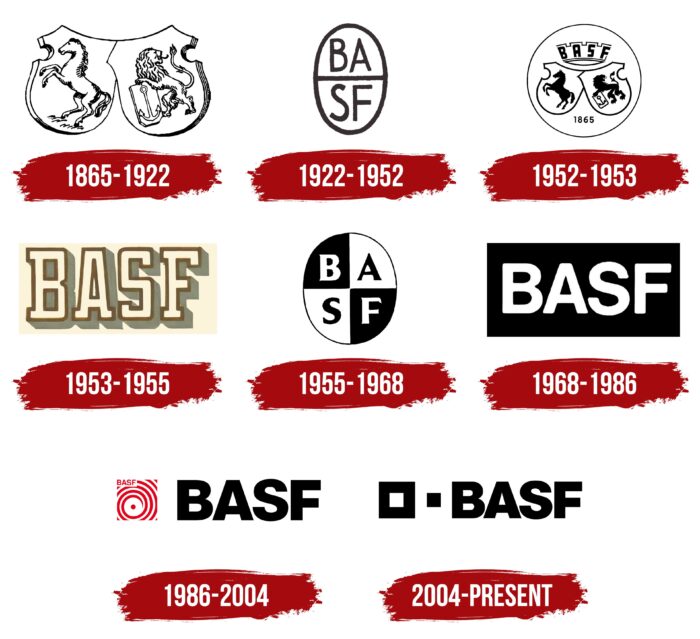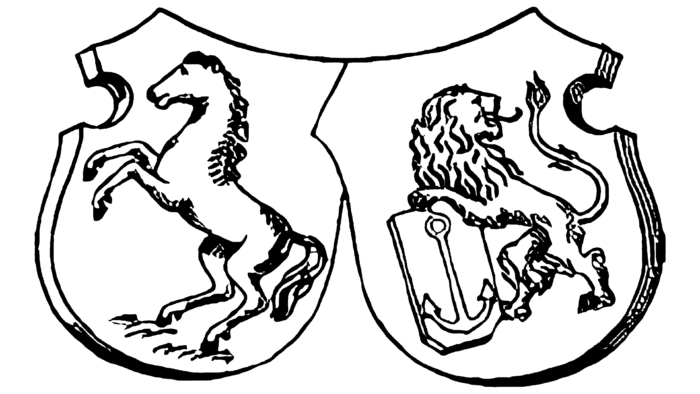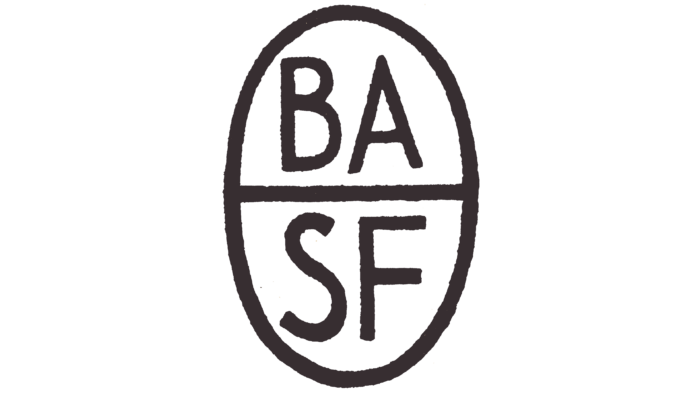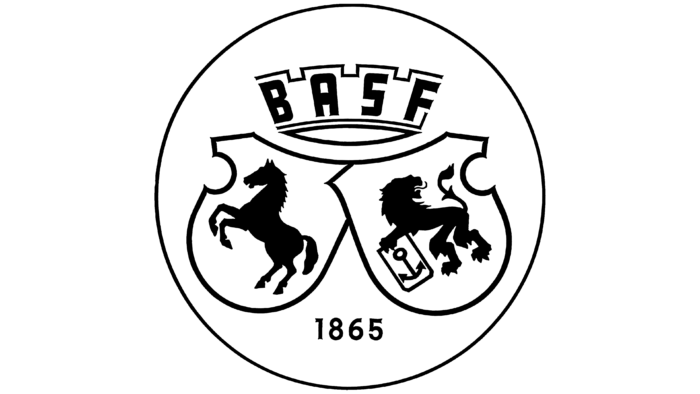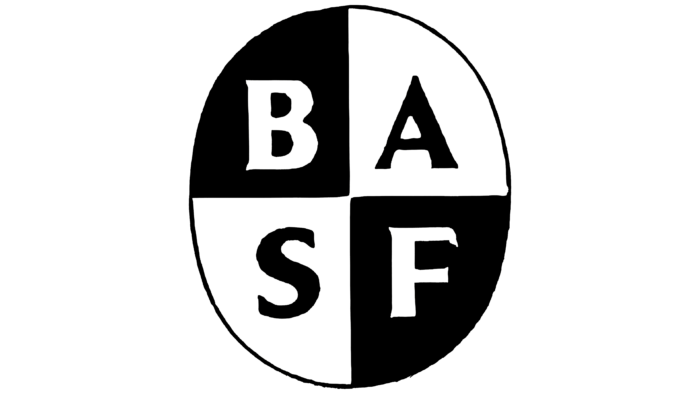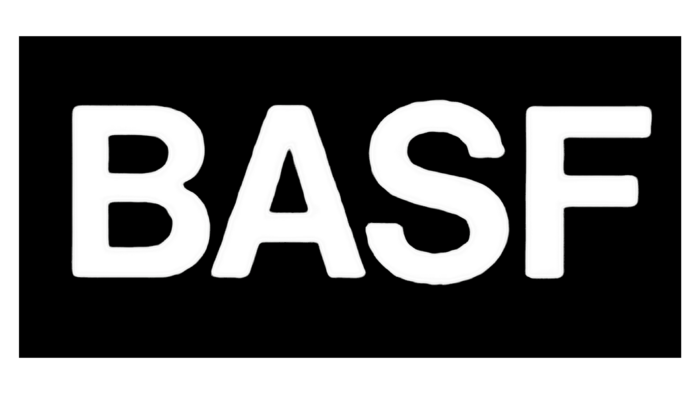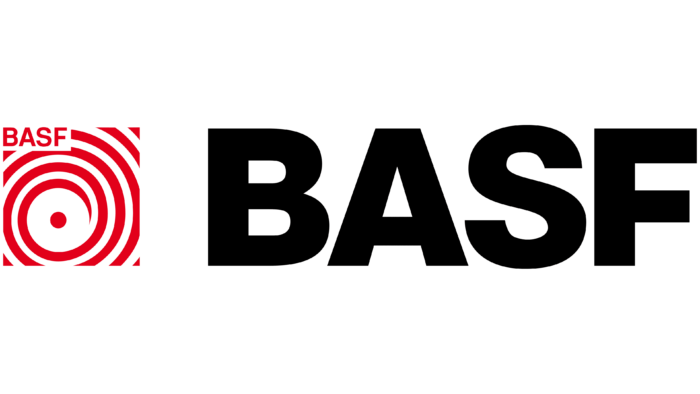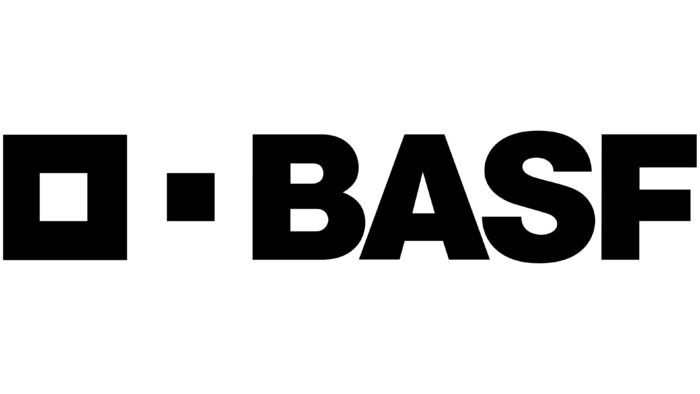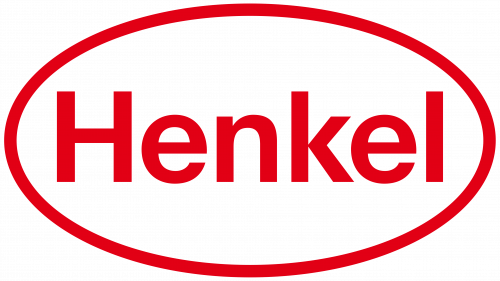Serious companies mean business. This is reflected in the brutal BASF logo, which appeals to a potential customer segment. Its robust design reflects the reliability and responsibility of a chemical manufacturing company.
BASF: Brand overview
| Founded: | 6 April 1865 |
| Founder: | Friedrich Engelhorn |
| Headquarters: | Ludwigshafen, Germany |
| Website: | basf.com |
Meaning and History
BASF is a historical abbreviation that appeared at the beginning of the brand’s creation. It points to its roots and technical background because it stands for “Baden Aniline and Soda Factory” (English version – Badische Anilin-und SodaFabrik). The company was founded by the industrialist Friedrich Engelhorn and launched in 1865. The location of the private company was the city of Mannheim in the lands of Baden.
The founder worked at a gas plant that produced flammable gas, the by-product of which was tar. He used it to make dyes and various chemicals, particularly acids and soda. To not pollute Mannheim’s air environment, the entrepreneur built his plant in Ludwigshafen, on the opposite bank of the Rhine. In 1866, all production was moved to a new site (BASF). A large list of products was produced there, which, in addition to acids and soda, also included rubber, fuel, explosives, ammonia, and gypsum.
This plant has also suffered many mergers and refurbishments. The concern experienced a special expansion in the 1960s when it began to open branches abroad massively. Its branches have appeared in the USA, Great Britain, Spain, Japan, India, Mexico, Italy, France, Argentina, Brazil, Belgium, and Australia. As a result, in 1965-1968, management radically changed the strategy, assortment, and corporate identity. In total, there are eight logos in its history.
What is BASF?
BASF is a chemical production concern from Germany that produces soda, acids, ammonia, fuel, rubber, gypsum, and other chemical products. It was formed in 1865 and is located in the German city of Ludwigshafen. Under his leadership, there are many subsidiaries and joint ventures located in 80 countries worldwide.
1865 – 1922
An emblem with historical roots dates back to that period, on which two heraldic images were presented – a horse and a lion. They looked like the classic elements of coats of arms on shields. To the left was a horse standing on its hind legs. On the right was a lion with an image of an anchor in its paws. The figures of animals looked like outline silhouettes with fine detailing. A common line connected the shields.
1922 – 1952
Then the logo was radically changed: instead of two heraldic shields, a vertical oval appeared. It was completely painted beige and outlined in black with a bold line. A similar strip was located inside and divided the geometric figure into two parts: at the top, there was the inscription “BA,” and at the bottom – “SF.” They were made in a smooth font of the same thickness as the frame. All letters were capital, black, without serifs.
1952 – 1953
The designers chose the debut version for the new logo and modernized it. They made the horse and lion figures completely dark to stand out against the white background. In addition, the developers added a linear structure that resembled a crown in shape. The teeth on it were straight with even angles, and in their gaps was the abbreviation of the name of the chemical manufacturing company Baden Aniline and Soda Factory – “BASF.” The letters were capital, large, bold, and vertically elongated. The authors of the logo placed this composition at the top, and at the bottom, they indicated the year the plant appeared – 1865. They circled all the elements with a thin black ring.
1953 – 1955
The new emblem looked completely different than the previous one. It consisted only of an inscription – the abbreviated name of the concern. Each letter was outlined around the perimeter with a light coffee stripe, reminiscent of a contoured frame. The interior of the symbols was painted beige. From the outside, they were complemented by gray shadows below and to the right.
1955 – 1968
In 1955, the return to the logo of 1922-1952 took place, but the grouping of the letters was different because each of them received an individual space. The designers divided the oval not into two parts but four – according to the number of characters. “B” and “F” were in black triangles, “A” and “S” in white ones. They were painted in contrasting colors to stand out against such a background.
1968 – 1986
The next logo looked like a rectangle. It was located horizontally, was black, and served as a background for white letters. The company’s name consisted only of capital letters – smooth, bold, sans serifs. Contrasting colors ensured good readability of the text.
1986 – 2004
The logo, presented in the mid-80s of the last century, contained, in addition to the text part, also a graphic one. The title was in bold black and placed on a white background. These were letters with wide legs that occupied almost the entire inter-character space. In front of them was a small square badge in red and white. It consisted of a spiral with a dot in the middle: vertical coils diverged from it. At the top left, a miniature inscription with a short form of the company name was superimposed.
2004 – today
As we move into the new millennium, BASF has adopted a conceptual identity mark. It includes two main components: the title and the squares. The first reflects the continuity, strengths, and strong traditions that have come from the past of the chemical industrial company. The second signifies its close partnerships and suitable solutions because the small square is an integral part of the big one, and they are perfectly compatible. Both figures look like a solid puzzle.
Moreover, the left square is larger. It consists of a wide outline. The right figure, on the contrary, is miniature. It has a solid fill and performs a dual role. First, it is a segment of a large square. Secondly, it is a separating element between the word “BASF” and the frame. The letters in the text are massive, almost one and a half times wider than in the previous logo. Some variants feature the corporate slogan “The Chemical Company.” As the management notes, it is an integral part of the identity and is used only in English. The motto is not translated into other languages.
Font and Colors
The international chemical concern has repeatedly changed its identity because it has constantly been developing: it has enlarged, supplemented its range, and opened branches. All this required a relevant and recognizable logo. As a result, he took one or the other form, succinctly conveying the company’s name. Graphics evolved since the text part retained its original appearance – wide sans-serif letters.
The logo uses a typeface that resembles two types of fonts: Supria Sans Black and Sequel Sans Head Black by OGJ Type Design. This is a grotesque, consisting of broadband letters. As for the corporate palette, the BASF logo does not have one. It says so in the branding guide. The developers note that it receives a shade of the background on which it is located. The only condition is that it must be one color. This approach reflects the flexibility and innovativeness of the concern, represented in all areas of activity. The inscription can be painted in black or white.
BASF color codes
| Black | Hex color: | #000000 |
|---|---|---|
| RGB: | 0 0 0 | |
| CMYK: | 0 0 0 100 | |
| Pantone: | PMS Process Black C |

